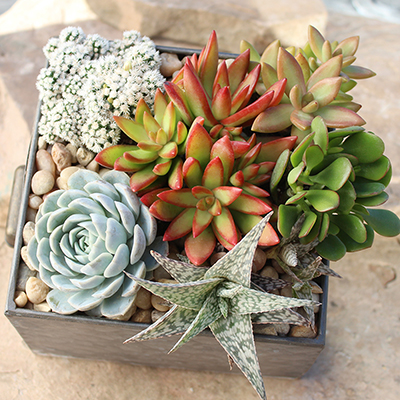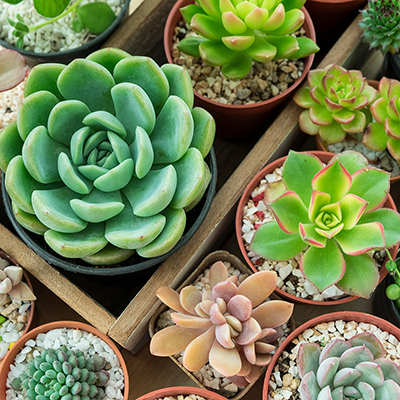Types of Cactus Plants

Last updated September 7, 2023
Cactus plants are fun, easy-to-grow houseplants. Native to the Western hemisphere, these plants like arid conditions, so they don’t mind the dry air in most homes and are forgiving if you occasionally forget to water them. Most are succulents, plants with shallow root systems and thick stems that store water. Cactuses with rounded shapes are usually able to hold large amounts of water.
Cactus plants have modified, protective leaves called spines. These emerge from areoles, which are special structures on the plants.
Difficulty:
Beginner
Duration:
Under 2 hours
Table of Contents
Types of Cactus Plants
Light Requirements for Cactus Care
How to Water and Fertilize Cactus Plants
Potting and Repotting Indoor Cactus Plants
Types of Blooming Cactus Plants
Small Cactus Types
Types of Cactus Plants
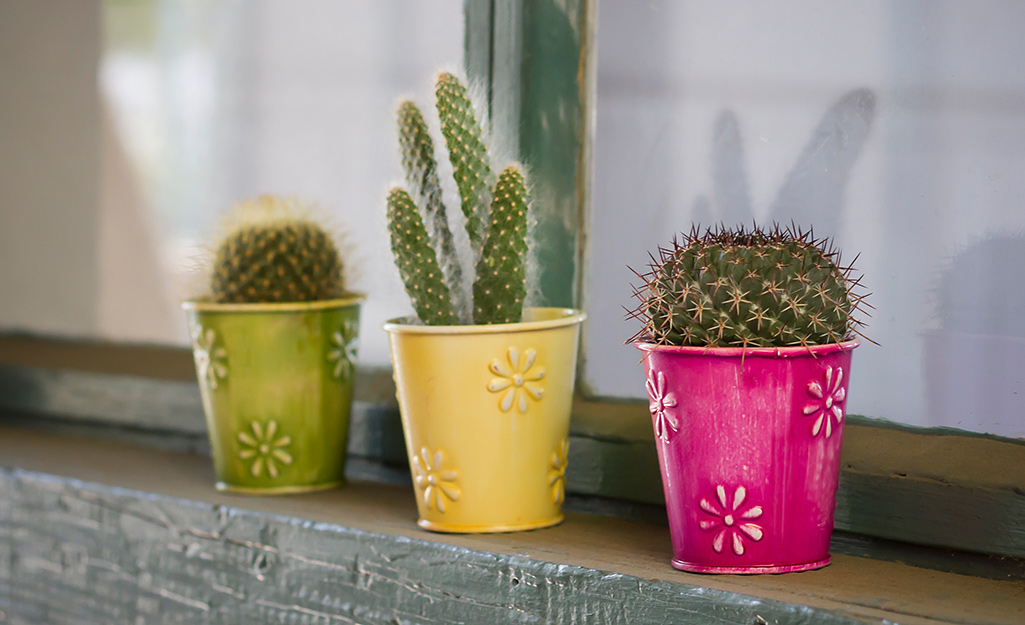
Popular types of indoor cactuses include cereus, Echinocactus (commonly called golden barrel), Espostoa (also known as old man), Opuntia (nicknamed prickly pear, bunny ears and Christmas tree) and Rebutia (also known as crown cactus). There are more than 2,000 species, so you can find many more indoor cactus varieties in a variety of colors, shapes and sizes.
Most indoor cactus varieties are hardy to 40 degrees Fahrenheit, so while they’re great houseplants, they can’t survive outdoors in all areas.
Light Requirements for Cactus Care
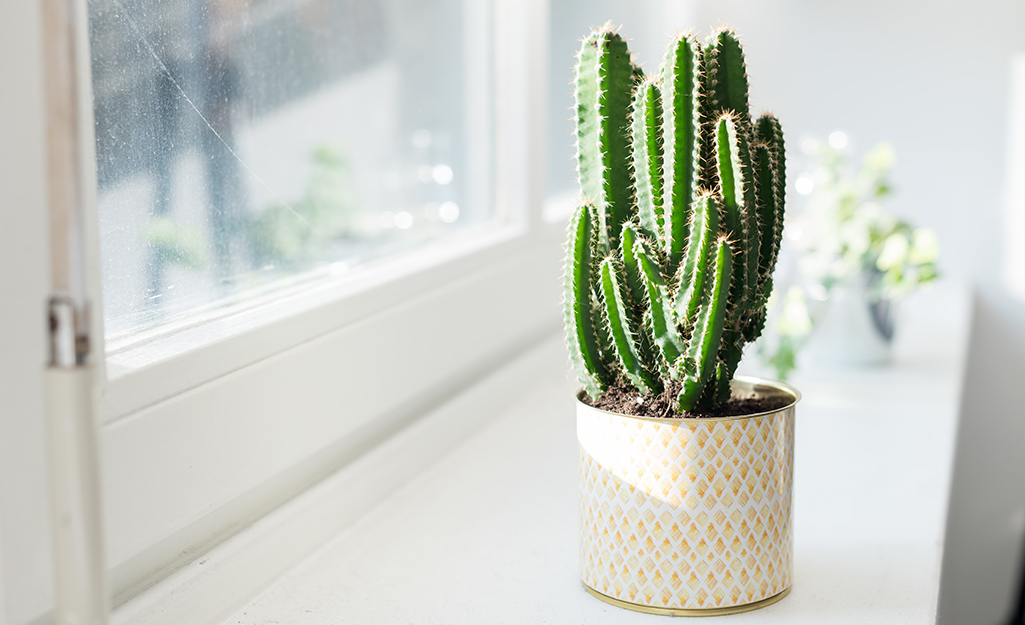
Cactuses grown as houseplants need the same growing conditions they need in nature: a warm, sunny spot with plenty of bright light. Some can take direct sunlight. Read the tag or label on your plant to know how much light it requires. Some indoor cactus plants grown in direct light need to be watered more often than cactus varieties that get less light.
Rotate your plant every week so it doesn’t start to lean in the direction of the light.
If your cactus gets enough light, it may bloom in beautiful colors. Some blooms even have a fragrance. Do a little research on blooming cactus varieties to know what to expect from your plant.
How to Water and Fertilize Cactus Plants
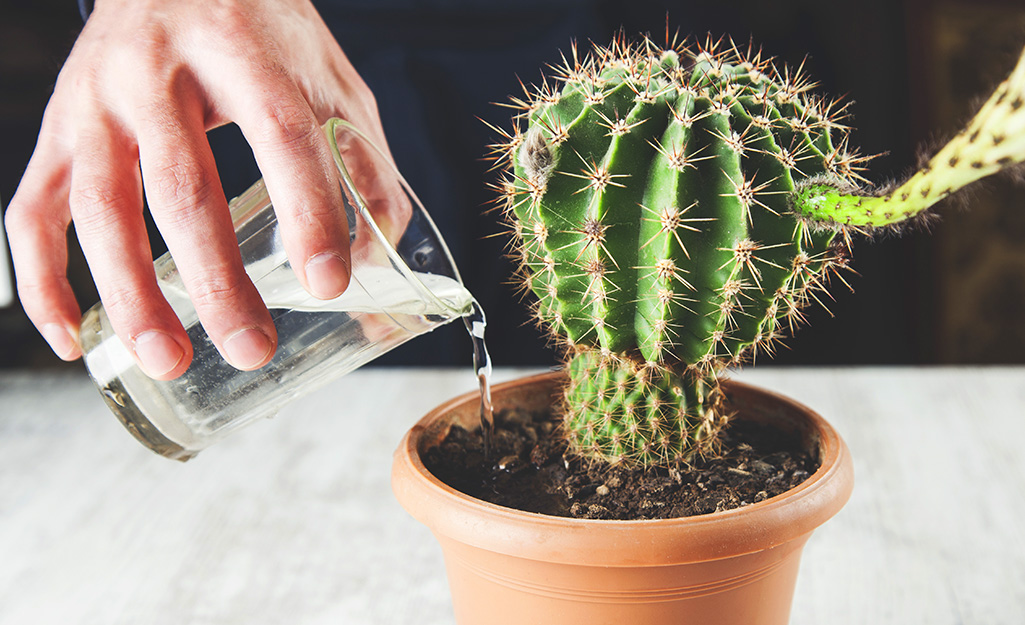
Cactuses don’t like wet roots, so grow yours in a pot with drainage holes. If your container doesn’t have any, make a few in the bottom, or put the cactus in a pot that does have holes and slip it into a larger, decorative pot. Take the smaller pot out when you water and let the excess water drain away.
Most cactus plants need to be watered only every two or three weeks during the warm months. Some can go longer. If you’re using a saucer or tray under your plant, pour out any excess water that collects in it. Always water the soil around your plant, not its stem.
Because cactuses grow slowly, they only need occasional fertilizing. Fertilize them two or three times a year while they’re actively growing with a general purpose houseplant fertilizer. Follow the directions on the label for how much to use. Stop feeding during the cold months.
Fertilizers are available as slow-release pellets, ready-to-use pump formulations and water-soluble fertilizers that should be applied at half-strength.
Potting and Repotting Indoor Cactus Plants
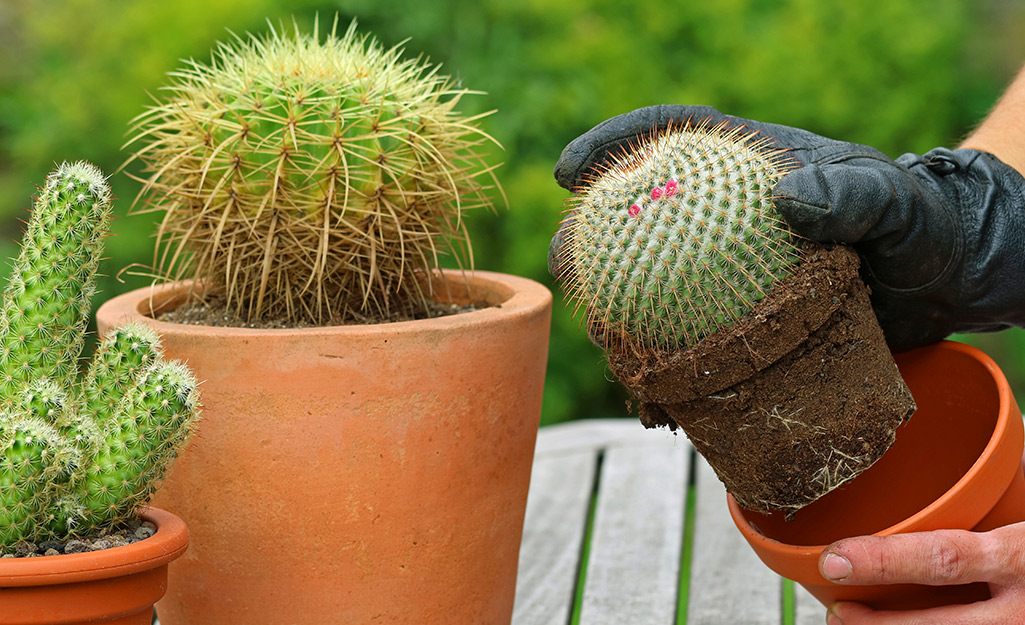
When you’re ready to plant your cactus, use a cactus-succulent potting mix with sand in it and wear thick gardening gloves to protect your hands. Use the same kind of mix when repotting.
Cactuses don’t need repotting very often, but when you repot, use a container two inches bigger than the current one. Again, wear gloves. Cut away any dead or unhealthy plant parts and gently shake the old potting mix off the roots. Put the cactus in the new pot and fill it to the neck level of the plant. Tap the pot lightly to settle the potting mix.
Types of Blooming Cactus Plants
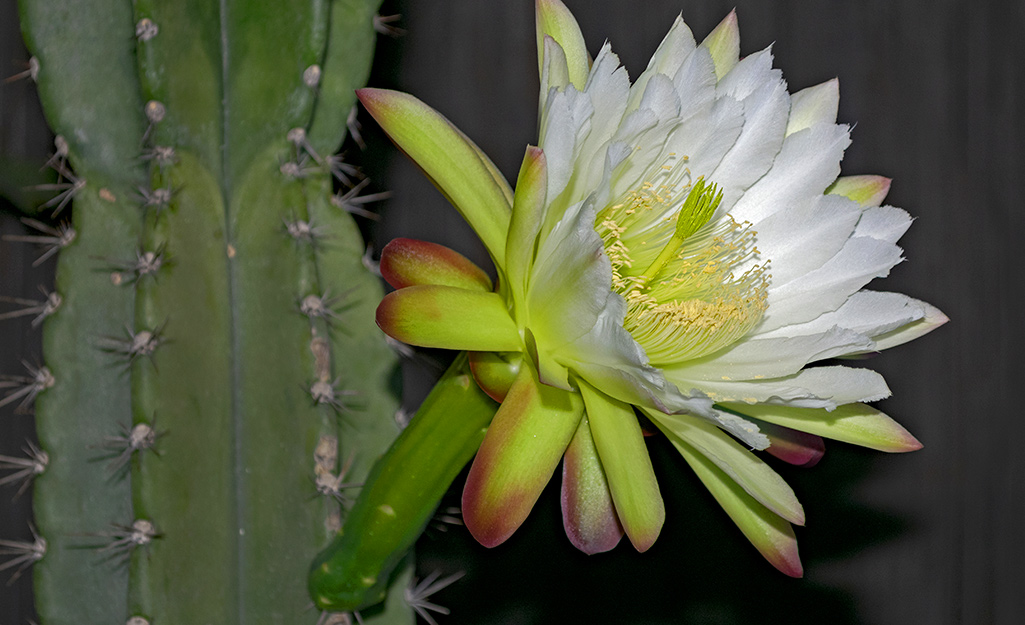
All cactus can bloom when they’re mature, but not all do. Some take up to 30 to 50 years to produce flowers, and others never bloom unless they get exactly the right combination of light, water and fertilizer.
Popular types of blooming indoor cactuses include Christmas cactuses (Schlumbergera bridgesii) and Thanksgiving cactuses (S. truncate). These plants need long nights, cool temperatures and short days to form blooms. They’re often sold in bloom around the holidays. Encourage them to flower again by cutting back on watering, starting in October, and keeping them in a cool (50 to 55 degrees Fahrenheit), dark location for 12 to 14 hours a day. After six to eight weeks, buds should appear. Let the plants adjust slowly to normal household temperatures and start watering just enough to keep them evenly moist.
Another cactus known for its flowers is the night-blooming cereus, also called Honolulu queen and other names. It’s a sprawling or vining cactus that tolerates full sun to partial shade. Fun fact: Dragon fruits, which are often used to flavor summer beverages, come from the Honolulu queen cactus.
Small Cactus Types

Cactuses don’t have to be big to hold center stage in your home. Star cactus, also known as starfish or sea urchin cactus, is petite and produces a single white or yellow bloom.
Moon cactuses are grafted plants, with two cactuses joined together to grow as one. They often have a brightly colored top and many stay small.
After its single yellow flower fades, bishop’s cap cactus, a type of spineless cactus, also remains small. It needs little water, and since it grows very slowly, it’s ideal for terrariums or bonsai pots. But be aware that the humidity in a closed terrarium can kill cactus plants. Instead, use an open terrarium with enough space between the plants and the inside of the container to let air circulate freely and water evaporate.
For other small cactus plants, consider some of the ball-shaped Parodia cactuses. Often called silver ball cactuses or silver balls, they can produce bright flowers.
Cactus Care Concerns
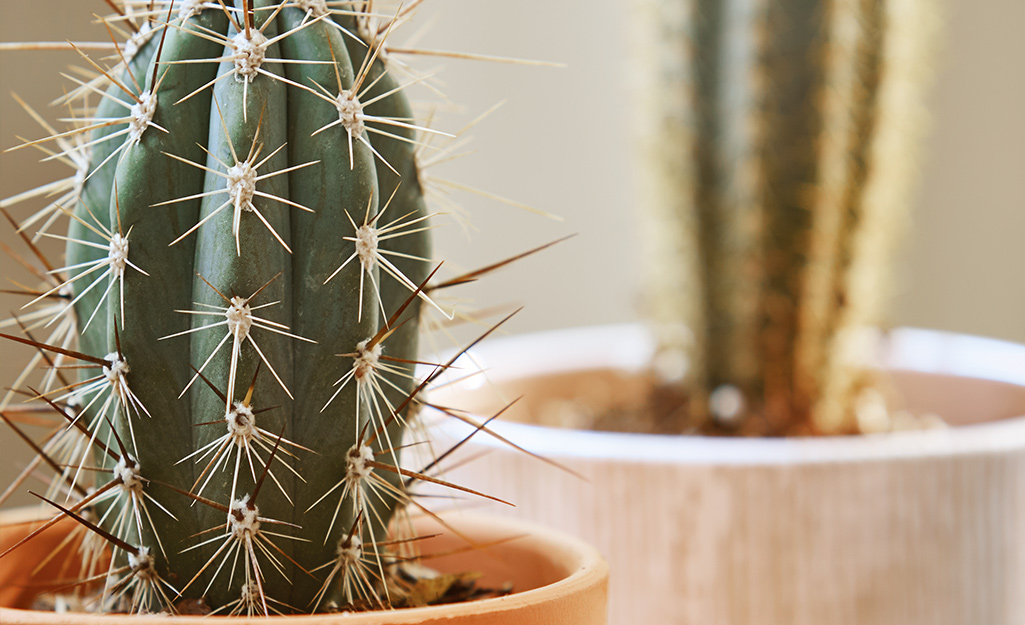
The most common problem that occurs with cactus plants is overwatering. Indoor cactuses can also be attacked by spider mites, scale, mealy bugs and other insect pests. Look over your plants when you water them and if you spot any infestations, treat as soon as they occur. You may even want to quarantine an infested cactus, so any pests won’t spread to other plants.
Some plants and plant parts can be toxic or cause allergic reactions. Be safe and keep pets and children away from cactuses and their sharp spines.
Whether you need the right planters, succculents or potting soil, The Home Depot delivers online orders when and where you need them.


